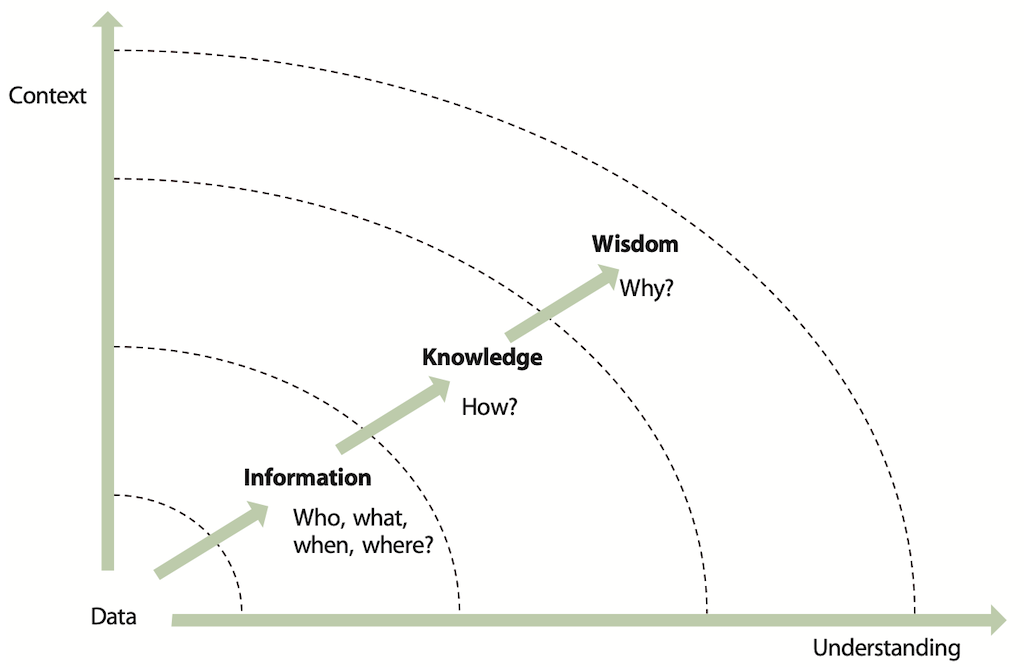Questioning ITSM Trend Reports: Beyond Surveys — What We See in Practice

In this interview, Edvinas Pranculis, discusses the validity of ITSM trends for 2025 as outlined in the ITSM.tools report with Tyrunas Jokubauskas, CEO and founder of SYNERGY. Drawing on over 300 ITSM project deployments in the past 20 years, Tyrunas offers a critical perspective grounded in practical observations. The aim is to encourage readers to evaluate such trends sceptically.
Edvinas: From the summary, it appears that in 2025, governance has changed and grown in importance, while AI remains prominent, Value demonstration persists, but its application in operations has declined. Enterprise Service Management is absent in 2025, as is Service Integration. However, a new ‘People’ element has emerged, covering attitudes, behaviour, and culture — though it is unclear in what context these are relevant. Are these the people working in support, or the service users?
Tyrunas, could you comment on each of these trend changes and whether you observe them in your work with clients?

Governance
Edvinas: Let us start with governance, separate from AI. Do clients really request this?
Tyrunas: We have seen this trend over the last 3–4 years. Clients order business processes like compliance management and governance alongside typical ITIL IT processes. Clients themselves ask to demonstrate what governance functionality is available in the ITSM platform. Workflow implementations related to governance, security, and compliance processes are quite popular. There is definite demand for these.
However, we have a rather silly situation with governance. What ITSM vendors provide — the ‘pre-built’ functionality in products, packages aimed at business — is often tailored to the US market. Europe views governance entirely differently. It has distinct directives and requirements for IT and critical infrastructure. This applies especially to organisations with heavily regulated activities and specific demands. GDPR and NIS2 are part of governance, but they are very European legislation.
Therefore, out-of-the-box product functionality is unsuitable for immediate use. Even though we see the need, workflows and automations usually have to be built from scratch. Reworking what is already done is more complicated than creating anew from the start.
Moreover, I have never seen a well-implemented Risk Management process in ITSM platforms. It should allow managing risk assessment tasks and calculating threats and vulnerabilities as theory requires. The majority of governance theory is about risk management. I am not saying there are no basic elements, like task assignment or non-conformity tracking, but nothing more advanced.
Governance is a big buzzword in the ITSM field, and clients definitely need it, but I doubt that an ITSM platform or service desk is the right tool for governance. — Tyrunas Jokubauskas
This raises the question — is it worth expecting someone to create good governance and risk management functionality in an ITSM platform? Or should we just use specialised GRC platforms? These employ various methodologies and are adapted for both quantitative and qualitative risk analysis. In my view, governance is a big buzzword in the ITSM field. Clients definitely need it, but I doubt that an ITSM platform or service desk is the right tool for governance. Risk analysis is an adjacent activity that should simply be continuously performed in processes.

GenAI
Edvinas: Has GenAI, which everyone talks about so much, really become a trend in ITSM projects?
Tyrunas: From Generative AI, we see very little benefit so far. Except perhaps in Knowledge Management. What useful content can AI write? Summarise something? Such content has very little value.
AI is used for generating Knowledge articles in organisations that create products. It is one thing when you are building a product and AI helps create documentation. Maybe you could stretch it to say Generative AI can help, but only in a very limited part of Problem Management.
Edvinas: Do you think the questionnaire itself was prepared with some expected or imagined trends, so respondents simply choose answers to align with these trends, and probably without fully understanding how it would work in practice?
Tyrunas: In my understanding, they completely missed the mark with Generative AI. If you look into it now, everyone is talking about Agentic AI. This is where AI not only chats with you but specifically creates some result — for example, opens firewall ports, creates new user accounts. So Generative AI is not the type of AI everyone is excited about.
At the SITS shows this year, where SYNERGY attended, a lot of attention is given to AI use for delivering results. Not just preparing instructions, but actually performing the work.
I might also mention that today I see another AI trend. I do not know if everyone knows the term RAG. RAG, or Retrieval-Augmented Generation, roughly means augmented prompt creation. This means that based on the prompt, similar knowledge related to the specific organisation is detected, for example, using the organisation’s Knowledge base.
Then, the user’s prompt is additionally supplemented with organisation-specific context. And then you let AI process it. The resulting output is further stored in the database. This ensures continuous learning and improvement in the specific company’s context. Therefore, I believe this area will expand further. It can lead to automated Knowledge Articles creation. But today, everyone is still talking about Agentic AI. Speaking of GenAI as a trend — there is no such thing.
They completely missed the mark with Generative AI, because if you look into it now, everyone is talking about Agentic AI. — Tyrūnas Jokubauskas

Advanced ITIL
Edvinas: Regarding Advanced ITSM capabilities, is there increased interest?
Tyrunas: Advanced ITIL is a very unclear term. Usually, the advanced level is achieved through integrations with third-party products. This includes the ability to exchange data and immediately update information in the Service Desk platform after some changes.
I would not say there is increased interest this year. I do not really know how to answer precisely whether risk management, patch management, or vulnerability management is a service desk issue, or should be handled by GRC platforms.
When we have IT assets, it is good to know if they have patches installed, or vulnerabilities or not. But I very much doubt whether this needs to be in the ITSM or service desk system itself. Specialised solutions have this, with specialised reporting.
Because when resolving incidents, you can check the necessary information if it is in another tool. The problem with all security solutions is that they lack functionality to manage the process when people need to be involved in the loop.
When you need to create and assign tasks, track SLAs, to control whether the person did everything required. Because I believe software will do what is needed. In that sense, the ITSM platform is very useful.
Many security solutions have an internal ticketing system. But an analyst cannot work with a separate ticketing system for, say, vulnerability management, another in the SIEM system — and yet another in the ITSM platform. It is definitely more convenient when all tickets converge in one place and aggregate. This does not seem like very ‘advanced’ functionality. We encounter requests for integrations, but mostly with monitoring systems, not security solutions.

Value Demonstration
Edvinas: Do clients approach saying that in the ITSM platform, they would like to see the efficiency of specific workflows?
Tyrunas: Moving on to Value demonstration. But it is very hard to understand what should be considered as that benefit. ITIL talks a lot about value creation, but let me ask a question.
Suppose you manage incidents chaotically. Because you formalised the process and started registering incidents and tracking them in the Service Desk platform, the number of incidents does not decrease. They remain the same. Whether their resolution speeds up — very doubtful, because the Service Desk platform itself brings overhead to register and describe incidents. That forgotten incidents no longer exist — definitely yes, and there is a lot of benefit in that.
What I want to say is that by automating processes, you rarely make them more efficient, but you guarantee that you always have control over the situation. The Knowledge Management process brings the most tangible benefits. It saves time for people, which can be seen as improved efficiency.
We have done analyses for several clients. These show that by finding the needed answer in the Knowledge Base, they save on average about 20 minutes of work time per day. Over a year, this saves quite a lot of time, which of course can be valued in money. And it adds up to significant sums. So saved time can be allocated to other, more important tasks. IT specialists’ time is usually spent on ‘firefighting’ — all operational things. Second, daily operational IT maintenance tasks that are not ‘fires’. And third, projects. Therefore, by saving time wasted on firefighting, it can be devoted to projects that create much greater added value.
Everyone wants to measure some KPIs, but whether this is related to value creation, I very much doubt. But speaking of demonstration, when you simply need to show the value that was created. Most KPIs that clients come up with are usually useless. For example, the number of incidents per month. What does it say? Nothing.
If you compare average resolution times and how they change. That also says nothing, because one incident is not equal to another. Some are resolved quickly, others can be a lot of trouble. How many tickets are registered and resolved per person. Same problem, because all incidents are different. Therefore, it is always best to measure everything through services downtime.
Then you can judge that the Incident Management process is good because services downtime is low. It is best to evaluate through the availability side. Because sometimes client requests, like making incident load-balancing, where incidents are automatically assigned to the specialist who is currently resolving the fewest. That will give absolutely nothing.
One person may take a long time to resolve one incident related, for example, to a core-banking system, where there could be very large losses. While another may already have 20 password reset tickets assigned. Therefore, coming up with good KPIs is very difficult. But since we always talk about IT or business service management — every KPI must be linked to the service — its availability, quality, money earned or lost, and so on.

People
Edvinas: Talk about people. Do you notice any different tendencies? Do clients demand that during implementations, cultural aspects be additionally considered in some other way?
Tyrunas: Speaking about the People part, it is very hard to understand what the authors really mean. A lot of empty words, so the question is what the respondents wanted to say when answering.
Let us start with the fact that we work with clients from very diverse markets. The approach to people and service management really differs there. Therefore, the expectations of involved people also differ. But everyone usually wants to take the ‘path of least resistance’ in service. That everything be very easy and simple.
Therefore, in the future, ITSM platforms’ end-user UI will have to change strongly. It will be similar to some AI chatbot, where a person freely says why they are dissatisfied. And the system, without any additional intervention from the user, decides whether it is an incident, change request, or service request.
I also notice that ITSM systems’ self-service UI will have to be redesigned. So that a simple user understands, and a smart user is not offended. And I see that developers have finally realised this. This is not related to cultural things, but we notice that people are almost untrainable. Users do not change — they want results here and now.
The ITSM platform does not influence user behaviour; it adapts. And the user encounters the ITSM platform not because they want a service tomorrow, but because they already tried to use the service and something was wrong. Moreover, users are accustomed to interacting with iOS and Android UIs or other beautiful modern UIs. ITSM platforms lag far behind. Although technical UIs perform their function perfectly, the user additionally wants modern aesthetics.
Previously, there was an understanding that ITSM is an enterprise application. No one expected beauty from it. It had to be functional and efficient. But now that is not enough. And now there are primitive ITSM systems that look very beautiful — colourful with bullets, animations. The UI can be very beautiful, but they are not like a constructor from which you can assemble a workflow so that it aligns with the business process.
Therefore, functional service desk platforms did not try hard. Everyone knew not to expect great beauty from them. But now that is not enough — everyone wants aesthetics and beauty. Users have become spoiled. Especially influenced by the new generation that grew up without letting go of smartphones. For them, it is strange that on a monitor you cannot touch things.

Automation
Edvinas: Do you feel that the need or expectations for automation have decreased?
Tyrunas: I absolutely do not believe that and do not see it. All clients want to automate tasks and make work easier for themselves. So it is hard to believe that automation became less relevant to someone.
All our clients who implement an ITSM platform increasingly try to adapt it for automation. Especially dumb tasks that repeat, like account reset procedures. These burn time, annoy, and bring no more value.
Edvinas: Thank you for your time and opinion.
To wrap up, various theories show how trend analyses and questionnaires can sway respondents. This often leads to biased expectations and self-fulfilling outcomes, much like in this ITSM.tools report.
The self-fulfilling prophecy is a prediction that changes behaviour to make it come true. Robert K. Merton coined this in 1948. In trend reports, suggested trends can prompt people to expect or favour them. This pushes industries to embrace those ideas.
The priming effect in surveys happens when initial information triggers certain ideas. It skews later answers. For instance, question phrasing or choices can highlight trends and boost their apparent value.
Response bias covers issues like order bias, where the sequence of options influences selections. In trend surveys, listing specific choices can make respondents match them, exaggerating expectations.
In IT and ITSM, reports such as Gartner’s Hype Cycle draw flak for building hype that turns self-fulfilling. Faith in these trends draws in resources, turning vague forecasts into reality.
Harry G. Frankfurt’s 2005 theory on bullshit fits here too. It covers claims unconcerned with truth, aimed at persuasion. Many see trend reports as just that — manipulative and lacking substance.
Bias like this can creep into reports. That is why we focus on insights from actual projects, not guesswork.
-
About SYNERGY
SYNERGY delivers ITSM solutions, implementing the Ivanti platform with ITIL-aligned process design, training, and bespoke integrations to automate IT and business workflows. With over 20 years of expertise and more than 300 projects, our international clients value our ability to resolve ITSM challenges swiftly and cost-effectively.
You can follow SYNERGY on LinkedIn and X platforms. Listen to this article on Medium if you have a subscription.


